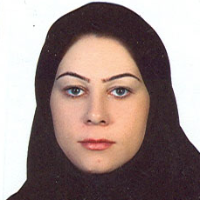Analyzing The Narrative Structure Of The Death Of Zahhak; A Persian Painting; According to Greimas's Actantial Model
Author(s):
Abstract:
This article tends to analyze “the Death of Zahhak”; one of the paintings of the Great Shahnama “Shahnama of Shah Tahmasb” which is done by Soltan Mohammad; based on semiotic and structural methods. By using library resources and content analyzing with the help of “actantial model” as a tool, coincidence of the narrative structure is studied in this Persian painting. First of all, based on one of the beneficial tools in recognition of narrative structures specially in literary texts or images; the “actantial model” of Greimas; in which the actions subordinating the syntagmatic analyses, break down in to six actants and the reduction into three opposition groups will be described for being familiar that how the analysis of the painting is going to be done. Secondly by categorizing the characters of the painting in three oppositions, the actant sub-classes: actant / antactant, real/possible and active/passive are denoted.Thirdly the three types of narrative syntagms: syntagms performancial, syntagms contractual and syntagms disjunctional will be described in the painting. The final step is derivation and analyzing the temporal relations in the text. As the conclusion we could see that the “Death of Zahhak” as a visual text is compatible with this modern narrative model; “the actantial model”; and it could be clearly described. The painter has illustrated the characters of the story in a reduction way with the complete tie to the literature. The three oppositions: subject/object, sender/receiver and helper/opponent are obviously derived in the painting. The most intellectual point is that the painter illustrates the most important oppositions in the more important part of the painting and the triangular composition of them will show the importance rule of them in the narration. Another smart point is personifying the concepts in the case of anthropomorphic being in accordance with the ontological analysis of the actants which shows the great intelligence of the painter. On the other side we could see another important provision of narrative structure: the temporal chains supporting the assumption of narrative theories, and graceful change of sequential temporal syntagms to the spatial syntagmatic relations. The temporal relations are divided in to five groups: simultaneity – succession, inclusive simultaneity, strict simultaneity, delayed succession and the mediate successions. The change of temporal syntagmatic concept “before” in the litrary text to the concept of “Up” in the visual text is so clear. It is seen that the use of verbal signs, not as an ornamental component, but as a completion of narration in partnership with other symptoms, has an active and important presence in the occurrence of event. As the last conclusion we could extrapolate that the immanent level and the manifestation level of the visual image makes the structure of the narration in the “Death of Zahhak “.As the last conclusion we could extrapolate that the immanent level and the manifestation level of the visual image makes the structure of the narration in the “Death of Zahhak “.
Language:
Persian
Published:
Journal of Fine Arts, Volume:16 Issue: 1, 2011
Page:
23
magiran.com/p988162
دانلود و مطالعه متن این مقاله با یکی از روشهای زیر امکان پذیر است:
اشتراک شخصی
با عضویت و پرداخت آنلاین حق اشتراک یکساله به مبلغ 1,390,000ريال میتوانید 70 عنوان مطلب دانلود کنید!
اشتراک سازمانی
به کتابخانه دانشگاه یا محل کار خود پیشنهاد کنید تا اشتراک سازمانی این پایگاه را برای دسترسی نامحدود همه کاربران به متن مطالب تهیه نمایند!
توجه!
- حق عضویت دریافتی صرف حمایت از نشریات عضو و نگهداری، تکمیل و توسعه مگیران میشود.
- پرداخت حق اشتراک و دانلود مقالات اجازه بازنشر آن در سایر رسانههای چاپی و دیجیتال را به کاربر نمیدهد.
In order to view content subscription is required
Personal subscription
Subscribe magiran.com for 70 € euros via PayPal and download 70 articles during a year.
Organization subscription
Please contact us to subscribe your university or library for unlimited access!



